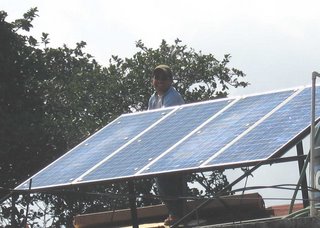In the early stages of the work two front-end loaders cleared the road that leads past the former public school, the hospital, the justice center and up the hill another 100 meters or so. So far the loaders have removed boulders and tree trunks, but representatives of FAFG are confident to find most of the estimated 130 bodies that are still buried in the mudslide. In a similar search in the department of San Marcos all but one of 46 bodies were found.
“Our goal is to find all the buried bodies, even if we have to uncover the whole area,” said Fredy Peccerelli, General Coordinator and FAFG director. At some places the dirt from that devastating night lies four meters deep. The freshly dug areas still smell of wet dirt that evoke strong memories from the days just after the catastrophe.
Former Hospitalito Atitlan has put aside two buildings that FAFG uses for offices, morgue and storage. FAFG has parked a big refrigerated trailer where retrieved bodies can be kept until properly buried. For now the area is closed to the public by temporary fences.
FAFG has been in the area for about four months in preparation for the search. Shortly after the mudslides several hundred people were reported missing, but little by little they showed up in shelters and in hospitals. Now the number of missing bodies is down to about 130. Through interviews with relatives of the missing, FAFG has learned about the bone size and teeth of their loved ones. This information will be of enormous help when identifying the bodies. David Cabrera, a forensic anthropologist, said that the relatives have been very supportive, although some aspects of the job have been cumbersome.
“The landowner is buried and the documents to land are buried along with him,” said David Cabrera.
During the work in Panabaj, which is estimated to take several months, FAFG is supported by Red Cross and Santiago Atitlan’s volunteer firefighters. For now the area is dominated by people in bright orange suits and hardhats, so different from when we watched the Hospitalito staff in their white, pastel blue and green outfits.
FAFG has formerly worked in most departments of Guatemala, opening mass graves and identifying bodies that were buried there during the civil war.



